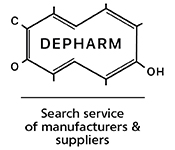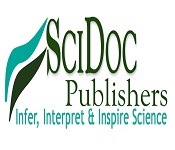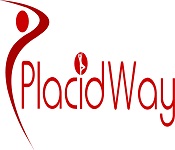
Clinical Pharmacy Meeting 2018

Theme: Mirroring the advancements in hospital and clinical pharmacy
Meetings International proudly announces the Global Experts Meeting on Hospital and clinical pharmacy (Clinical pharmacy Meeting) scheduled during July 30-31, 2018 at Melbourne, Australia. With a theme of "Mirroring the advancements in Hospital and Clinical Pharmacy".
Meetings International provides a Global Platform for Pharma, Biotech, Medical and Healthcare Professionals to Exchange Ideas, Knowledge and Networking at its 100+ International Conferences.
2018 Highlights:
- 50+ Participation (60 Industry: 30 Academia: 10 others)
- 10+ Keynote Speakers
- 5+ Plenary Speakers
- 20+ Exhibitors
- 14 Innovative Educational Sessions
- 5+ Workshops
The field of Hospital and Clinical Pharmacy is growing rapidly and its development is making tremendous impacts in Health care and pharmaceuticals. Clinical pharmacy is a branch of pharmacy which deals with the patient care and medication and promotes health, wellness and disease inhibition. The pharmacist works in management with the doctors for the patient healthcare. The importance and significance can be gauged by the fact that it has made huge advancements over the course of time and is continuing to influence various sectors.
Hospital and Clinical Pharmacy can be addressed as one of the greatest challenges in the Health care era of the 21st century – making the essential connections between Academics and industry professionals.However, the Asia-Pacific region is expected to grow at a faster CAGR owing to presence of high unmet healthcare needs, research collaborations and increase in Pharmacy research funding in emerging economies such as Australia, China, India and other economies in the region
Clinical Pharmacy Meeting 2018 has everything you need:
Open panel discussions: Providing an open forum with experts from academia and business to discuss on current challenges in nanomedicine and drugdelivery, where all attendees can interact with the panel followed by a Q&A session.
Speaker and poster presentations: Providing a platform to all academicians and industry professionals to share their research thoughts and findings through a speech or a poster presentation.
Editorial board meeting: Discussing on growth and development of open access Clinical pharmacy International Journals and recruiting board members and reviewers who can support the journal.
Round table meetings: Providing a platform where industry professionals meet academic experts.
Over 50+ organizations and international pavilions will be exhibiting at the Clinical pharmacy 2018 conference and Exhibition. Exhibitors will include equipment manufacturers and suppliers, systems providers, finance and investment firms, R&D companies, project developers, trade associations, and government agencies.
In addition to the products and services you will see at the Clinical pharmacy Exhibition, you will have access to valuable content, including Keynote Presentations, Product Demonstrations and Educational Sessions from today’s industry leaders.
The Clinical pharmacy meeting 2018 has everything you need, all under one roof, saving you both time and money. It is the event you cannot afford to miss!
Who's Coming to clinical pharmacy meeting 2018?
-
CEOs / CMOs
-
CTOs
-
VPS, Directors, & Managers
-
World top Ranked Scientists
-
Researchers
-
Universities
-
Hospitals
-
Pharmaceuticals companies
-
Clinics
-
And Many More....
Track 1: Hospital and Clinical pharmacy
In this session of the conference we are going in depth about hospital and clinical pharmacy which is now trending topic of consideration. Today Hospital Pharmacists are the element of the pharmaceutical care management in hospitals, which depicts the process in which medicines are selected, procured, delivered, prescribed, administered and reviewed to optimize the contribution of those medicines.
The Clinical Pharmacy market size worth USD 5.5 billion in 2022 | CAGR: 7.9%
The market is expected to grow at a five-year compound annual growth rate (CAGR) of 7.9% from 2017 to 2022, increasing to USD 5.5 billion in 2022, according to report by BCC research. Clinical genomics and Clinical proteomics play a very influential part during Quality assurance in pharmaceutical analysis. Therapeutic drug monitoring should be one of the aspects to be noticed while prescribing the drug for the betterment of the public health.
Track 2: Community Pharmacy
In this session we are going to talk about community pharmacy which goes hand to hand with the other pharmacies. Currently community pharmacy is one of the best healthcare facilities that highlight providing pharmaceutical analysis and primary care to a specific community. Typically, a registered clinical pharmacist dispenses medicine from the community pharmacy.
The Community pharmacy market size USD 5.38 billion in 2022 | CAGR: 8.2%.
The Community Pharmacy market is expected to grow at a lucrative CAGR of 8.2% from 2017 to 2022, to reach USD 5.38 billion by 2022 from USD 3.63 billion in 2017, according to report by reports and reports. In most countries regulations govern how dispensaries may operate, with specific requirements for storage conditions, equipment and record keeping and doing health promotion in sync.
Track 3: Clinical pharmacology and toxicology
This session is contrived to know about the facet in this generation of pharmacology and toxicology. Clinical Pharmacology, in theory, has been practiced for centuries through observing the effects of herbal remedies and early drugs on humans. Trial and error was the technique to achieve most of this work. Initially scientific advances allowed scientists to combine the study of physiological effects with biological effects. This led to the first major breakthrough when scientists used clinical pharmacology studies to discover insulin.
The Pharmacology market size is USD 4.93 billion by 2022 | CAGR: 9.4%.
The Pharmacology market is expected to reach USD 4.93 billion by 2022 from USD 3.14 billion in 2017, at a CAGR of 9.4% between 2016 and 2021, according to reports and reports. Clinical pharmacology has expanded to be a multidisciplinary field such as pharmacodynamics, pharmacokinetics and has contributed to the understanding of drug metabolism, therapeutic efficacy and safety in humans. Over time clinical pharmacologists have been able to make more exact measurements and personalize drug therapies. Clinical Toxicology is involved with the different forms of toxic chemicals or overdosing of the drug and they associated with the different forms of diseases which lead to poisoning. It typically coincides with other sciences like as Psychopharmacology, Neuropharmacology and Immunopharmacology.
Track 4: Hospital Pharmacy & Health practice
In the Current scenario Health practice has become a growing field in pharmacy and in this session we are going to exchange ideas about it. Hospital pharmacy is the applied pharmacy service, which comprises the art, practice, and profession of choosing, preparing, storing, compounding, and dispensing medicines and medical devices, advising healthcare professionals and patients on their safe, effective and efficient use. This deals with the overall preparation, planning and management also pharmacological reports of the medication process.
The Health Practice market size is USD 5.20 billion by 2022 | CAGR: 5.8%
The Health Practice market is expected to reach USD 5.20 billion by 2022 from USD 3.92 billion in 2017, at a CAGR of 5.8% in the next five years (2017 to 2022), according to reports and reports. Health practice is where there is a specific enquiry and methodology to be followed for specific therapeutics.
Track 5: Clinical research & development
In this session we will be taking up the phase of research and development in the field of pharmacy. The Clinical research is a segment of healthcare science that resolves the safety and effectiveness (efficacy) of medications, devices, diagnostic products and treatment also chemical pharmacology regimens intended for human use. These may be incorporated for prevention, treatment, diagnosis or for relieving symptoms of a disease. Clinical research and development is different from pharmacy practice. In clinical practice established treatments are used, while in clinical research and development evidence is collected to establish a treatment by innovations in patient and community engagement.
The Clinical Research and Development market size USD 5.77 billion by 2022 | CAGR: 11.5%.
The Clinical Research and Development market is projected to reach USD 5.77 billion by 2022 from USD3.35 billion in 2017, growing at a CAGR of 11.5%, during 2017 to 2022, according to reports and reports. Clinical research refers to the entire catalogue of a drug/device/biologic, in fact any test article from its inception in the lab to its introduction to the consumer market and beyond. Once the promising candidate or the molecule is identified in the lab, it is subjected to pre-clinical studies, molecular pharmacy studies and treating different ailments or animal studies where different aspects of the test article are monitored and studied.
Track 6: Drug Monitoring & Drug dosing
This session of the conference is conceived to discuss about the monitoring and dosing of drugs. In the current aspect Drug monitoring and dosing is very important in field of pharmacy. Drug monitoring refers to the pre-treatment checks and individualization of drug dosage by maintaining plasma and blood concentrations within a defined therapeutic range. The combination of knowledge about preparation, administration and dosing of the drug is very much fundamental for therapeutic drug monitoring (TDM). Even the awareness about the side effects and the interaction plays a role during the drug dosing.
Track 7: Role of Pharmacists & Research in the Hospital
This session is to come up with more opinion about the role of pharmacist and research going on in hospitals. Pharmacists now are increasingly involved in various variety of process around medicines especially in mental healthcare. Pharmacists come under and acute independent sector in healthcare and they will be checking on the controlled drug in hospital pharmacy. Some pharmacists are now becoming independent prescribers and are allowed to prescribe without reference to a doctor and even be consultant pharmacist by providing expert advice on adopting medication.
Track 8: Pharmacovigilence and patient safety
This session is devised to know about the safety measures in the field of drug or either known as pharmacovigilence. The adverse drug reaction is monitored for the safety of the patient. Drug safety is a field where there are regular updates in safety reports, safety services and software’s. Reporting and monitoring of the drug safety is an essential factor to be considered and several quality management aspects are to be added. Everything related to the drug safety measures must be up-to-date for the betterment and reducing drug abuse.
Track 9: Industrial pharmacy
In this session of the forum the discussion about the industrial pharmacy is considered. Industrial pharmacy is an area where the manufacturing and development of the discovered drug is done. The industrial level clinical trials are an aspect to respect.
The Industrial Pharmacy market size is estimated to grow at a CAGR of 7.7% from 2017 to 2022, according to reports and reports. The things to be kept in mind in an industrial pharmacy are the enhancement of product management along with the minimization of drug abuse. This can be achieved by following good manufacturing practices (GMP).
Track 10: Pharmacy education
This session of the conference deals with the educational aspects in the pharmacy field. Education is a primary requirement for pharmacist other than basic educations one can study other topics related to the pharmacy which will be necessary in upcoming years like clinical bioinformatics, clinical data management, Pharma Risk Management, Alternative Medicine, Pharmaceutical ethics.
The analysts forecast Pharmacy Education market in the US to grow at a CAGR of 4.29% over the period 2017-2022, according to BCC reports. The pharmacist must be educated with his ethics like clinical abuse\misuse and also should have the knowledge about the duration of the drug treatment.
Track 11: Hospital and clinical informatics
This session takes into account the latest technology in storing and retrieval of patient data, in other way know as hospital and clinical informatics. The subdivision to be known is this field is the pharmacy informatics, nursing informatics, biomedical informatics and public health informatics.
The Hospital and Clinical informatics market size is USD 2.97 billion by 2022 | CAGR: 6.2%
The Hospital and Clinical Pharmacy market is expected to reach USD 2.97 billion by 2022 from an estimated value of USD 2.20 billion in 2017, growing at a CAGR of 6.2% during the forecast period, according to reports and reports. Informatics is a necessary thing to be incorporated in all hospitals and clinics because of the uses like knowing the individual’s past medication, doctor in charge of the particular individual and many more.
Track 12: Tele Health via Pharmacy
Nowadays everything is happening digitally. This session is to discuss the digitalization in the field of pharmacy or can be mentioned as Online Pharmacy. As the generation goes on so does the Technology, similarly in field of Pharmacy everything now can be done online like appointment with the pharmacists, counseling though online and even the prescriptions can be made through internet.
The global Online Pharmacy market is estimated to grow at a CAGR of 9.5% from 2017 to 2022. This advancement in pharmacy is booming in current and will be a benchmark in the upcoming generation. Highlights under this session are CP2GP (Community Pharmacy to General Practice) and also TeleMedicine which will be available 24\7.
Track 13: Oncology pharmacy
This session is added to reach out the topics of pharmacy in oncology or in other words Cancer Pharmacology. Cancer is one of the most anticipated diseases which cased huge number of death, to come over this many pharmaceutical techniques like chemotherapy and other high alert medications which are effective and cost-efficient therapy were introduced.
The global oncology information system market is estimated to grow at a CAGR of 8.5% from 2017 to 2022, according to reports and reports. The efficiency of such pharmaceutical technique depends on the management of drug choice, dosage, route of administration and other parameters.
Track 14: Pharmacoeconomics
This session is to know about the economic status of the pharmacy which plays a major role in affording the medication. Pharmacoeconomics refers to the scientific discipline that compares the value of one pharmaceutical drug or drug therapy to another based on efficient outcome research. The study evaluates the cost and effects of a pharmaceutical product and helps in knowing the health policy. These studies serve to guide optimal healthcare resource allocation, in a standardized and scientifically grounded manner.
The Pharma markets size is USD 8.5 billion in 2022 | CAGR: 2.8%.
The Pharma markets reached USD 6.1 billion in 2017 and expected to reach USD 8.5 billion in 2022 for a CAGR of 2.8%. Pharmacoeconomics centers on the economic evaluation of pharmaceuticals, and can use cost-minimization analysis, cost-benefit analysis, cost-effectiveness analysis or cost-utility analysis. Quality-adjusted life years have become the dominant outcome of interest in pharmacoeconomic evaluations, and many studies employ a cost-per-quality analysis.
Track 15: Pharmacogenomics and therapeutics
This session of the forum is to share knowledge about the pharmaceuticals in the genome level. Pharmacogenomics and therapy is the study of the role of the genome in drug response and treatment in a gene level. This technology deals with genetic makeup of an individual and study of the response to drugs and influence of acquired and inherited genetic variation. Correlating gene expression or single-nucleotide polymorphisms is then compared with pharmacokinetics and pharmacodynamics (drug absorption, distribution, metabolism, and elimination) as well as drug receptor target effects.
The global market size of Pharma therapies is USD 21.3 billion by 2022 | CAGR: 1.3%
The global market for Pharma therapies reached USD 19.9 billion in 2017and expected to reach USD 21.3 billion by 2022, increasing at a compound annual growth rate (CAGR) of 1.3% from 2017 to 2022, according to the BCC reports. Pharmacogenomics is often used synonymous with pharmacogenetics. Although both terms relate to drug response based on genetic influences, pharmacogenetics focuses on single drug-gene interactions, while pharmacogenomics comprises a more genome-wide association approach, incorporating genomics and epigenetics while dealing with the effects of multiple genes like mutagenicity and carcinogenicity on drug response.
Track 16: Consultant pharmacists
This session is to know the advantages of having the consultant pharmacists. Consultant pharmacists help in giving guidance in managing optimal medication. The health of the senior people cannot be predicted at once hence the consultant pharmacists play the role as senior care pharmacists and even suggest for the complementary and alternative medicines when necessary. E-prescription is one of the useful and helpful method of prescription in the current generation which used by the consultant pharmacists.
Track 17: Disease management
This session takes into interest the latest changes in disease management. Disease Management provides a comprehensive discussion on the management of diseases which are commonly encountered by pharmacists. Characterizing the diseases and knowing concurrent disease along with interactions is useful during medication and helps the pharmacist in the counseling part. In such management system the individual will be give knowledge about the clinical features and treatment guidelines.
Track 18: Good clinical practices
This session is entirely allotted for the discussion about the good clinical practices. A few guidelines must be followed while performing clinical trials. The investigator and sponsors are responsible for maintaining the informed consent form, monitoring the site of clinical trial and registration and reporting must be done to the authorized authority. Quality assurance of the drugs to be used and rules of the trials must be accepted and certified from Institutional review board (IRB) and independent ethics committees.
Track 19: Travel Medicine
Travelling is now one of the most happening things in the world. Accordingly in this session of the forum we opt to discuss about the Travel medicine. Travel medicine in other word can be explained as aspect where prevention and management of health issues of international travelers is considered. This part of health profession is concerned about the impact of tourism on health and also advocates for improved health services and safety services for tourists and also about migrant health.
The global market size of Travel Medicine is USD 4.6 billion by 2022 | CAGR: 5.5%.
The global market for Travel Medicine will grow from nearly $3.6 billion in 2017 to $4.6 billion by 2022 at a compound annual growth rate (CAGR) of 5.5% between 2017 and 2022, according to BCC reports. Personal travel health kit one of the suggested thing to carry while travelling abroad. One of the safety services is getting a travel insurance done.
Track 20: Entrepreneurs’ investment meeting
The main aim of this session is to get all the entrepreneurs and business personnel under a single roof and help them in all possible ways. Pharma marketing helps the pharmaceutical companies or a sole person to get investor for the work based on product to be marketed. B2B meetings help in many aspects like collaboration, mutual partnerships etc.
Market Analysis
Pharmacists represent the 4th largest health professional group in the Australia. Although some pharmacists work in non-patient care settings (e.g., teaching, research, and administration), most work in a variety of patient care settings.
Australia is one of the world’s largest market for pharmaceuticals and the world leader in biopharmaceutical research. According to the Pharmaceutical Research and Manufacturers Association (Pharma), Australia firms conduct the major of the world’s research and development in pharmaceuticals and hold the intellectual property rights on most new medicines. Australian government support of biomedical research, along with its unparalleled scientific and research base and innovative biotechnology sector, making the Australia market the preferred home for growth in the pharmaceutical industry.
Retail pharmacists make up 63% of all pharmacists in Australia and work at a variety of locations, ranging from dedicated franchises, mass merchandisers to smaller community pharmacies. Hospital Pharmacists sometimes referred to as health system pharmacists are the second-most-prevalent pharmacist segment, comprising 26% of all pharmacists in the nation.
Importance & Scope:
Pharmacists are often the first port of call for people to get advice on health in general, as well as specific clinical conditions. Pharmacists have long been providing health services in every region of Australia, and while they remain mostly outside the glare of the limelight, the profession remains one of the most respected in the community. With the development of specific and potent synthetic drugs, the emphasis of the pharmacist’s responsibility has moved substantially towards the utilization of scientific knowledge in the proper use of modern medicines and the protection of the public against dangers that are inherent in their use. Pharmacists are employed in regulatory control and drug management, community pharmacy, hospital pharmacy, the pharmaceutical industry, academic activities, training of other health workers, and research. In all these fields, their aim is to ensure optimum drug therapy, both by contributing to the preparation, supply and control of medicines and associated products, and by providing information and advice to those who prescribe or use pharmaceutical products.
The market environment in which Pharmaceutical and Life Sciences companies operate is increasingly challenging, being driven by a more and more demanding healthcare agenda leading to a new marketing and sales system The global need for innovative, cost effective medicines continues to rise whilst regulators, payers, health care providers and patients are demanding greater value for money, proven effectiveness of products, more transparency and access to information.
Who should attend?
- Pharmaceutical, biotech, CRO, diagnostic and academic professionals specialized in:
- Clinical Pharmacology
- Hospital Pharmacology
- Drug Monitoring
- Pharmacovigilance
- Pharmacogenomics
- Therapeutics
- Oncology Pharmacy
- Drug dosing
- QbD
- Community Pharmacology
- Research
- Clinical and Hospital Informatics
- Pharmacists
- Nursing
- Health practicing
- Consultant Pharmacy
- Disease management
- Health Care Providers
- CRO’s
- CMO’s
- CRA’s and CRC’s
Why should attend?
- 50+ Participation (60 Industry: 30 Academia: 10 others)
- 10+ Keynote Speakers
- 5+ Plenary Speakers
- 20+ Exhibitors
- 14 Innovative Educational Sessions
- 5+ Workshops
- 20+ Organisations
- B2B Meetings
About City:
Melbourne is the coastal capital of the southeastern Australian state of Victoria. At the city's Centre is the modern Federation Square development, with plazas, bars, and restaurants by the Yarra River. In the Southbank area, the Melbourne Arts Precinct is the site of Arts Centre Melbourne – a performing arts complex – and the National Gallery of Victoria, with Australian and indigenous art. The City of Melbourne municipality covers 37.7 km2 and has a residential population of 136,336 (as of 2016). It is forecasted to grow to 150,874 in 2018. It is made up of the city Centre and a number of inner suburbs, each with its own distinctive character and with different businesses, dwellings and communities living and working there. On an average weekday around 909,000 people use the city, and each year Melbourne hosts over a million international visitors.
Pharmacy Associations in world:
- American Association of Colleges of Pharmacy (AACP)
- American Pharmacists Association (APhA)
- American Society for Pharmacy Law
- American Society of Consultant Pharmacists (ASCP)
- American Society of Health-System Pharmacists (ASHP)
- Professional Compounding Centers of America
- International Pharmaceutical Federation (FIP)
- International Pharmaceutical Students’ Federation
- European Pharmaceutical Union (EPU)
- Pharmaceutical group of the European Union (PGEU)
- Canada Pharmacists Association
- Canadian Society of Hospital Pharmacists
- Chinese Pharmaceutical Association
- Danish Association of Pharmaconomists
- Pharmaceutical Society of Ireland
- Pharmaceutical Society of New Zealand
- National Pharmacy Association
- Royal Pharmaceutical Society (RPS)
Pharmacy Associations in Australia:
- Australian College of Pharmacy
- Pharmaceutical Society of Australia
- The pharmacy Guild of Australia
- The society of Hospital Pharmacists of Australia
- Australian Association of Consultant Pharmacy
Top Pharma universities in the World:
- Harvard University
- University of Cambridge
- University of Oxford
- King’s College London
- Monash University
- The University of Nottingham
- University College London
- National University of Singapore
- University of North Carolina
- Yale University
- Imperial College London
- University of California
Top Pharma universities in Australia:
- University of Queensland
- University in Sydney
- Curtin University
- University of Tasmania
- Monash University
Top Pharmaceutical Companies around the World:
- Johnson & Johnson
- Roche
- Pfizer
- Novartis
- Bayer
- GlaxoSmithKline
- Sanofi
- Merck & Co.
- AbbVie
- Gilead Sciences
- Teva Pharmaceutical Industries
- Amgen
- AstraZeneca
- Eli Lilly & Co.
- Bristol-Myers Squibb
Top Pharmaceutical Companies in Australia:
- Australian Pharmaceutical Industries
- Alphapharm
- Sigma Pharmaceuticals
- Prima Biomed
- Solagran
- Chemeq
- Immuron
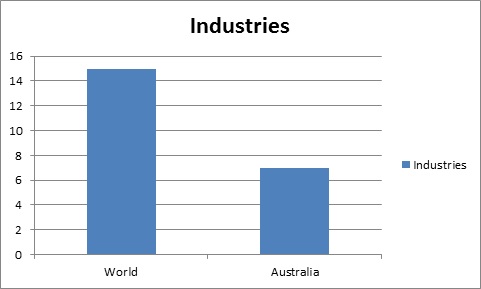
Fig 1: Pharma Industies
Top Hospitals in the world:
- Bumrungrad Medical Center
- Centro Medico ABC
- Gleneagles Hospital
- Johns Hopkins Hospital
- Klinik Hirslanden
- Massachusetts General Hospital
- Queen Elizabeth Hospital
- Royal Melbourne Hospital
- Wooridul Hospital
Top Hospitals in Australia:
- Royal Melbourne Hospital
- Royal Perth Hospital
- Austin Hospital
- St Vincent’s Hospital
- Royal Adelaide Hospital
- Healthe care Australia Pty Ltd
Health care Statistics:
Health care is one of the notable, rapidly growing industries globally. It includes various segments such as medical devices, pharmaceuticals, information technology, and services, all of which are developing at a fast pace. Today, the health care industry is under immense pressure to deliver high-quality medical care owing to an increasing demand for better facilities and services from patients around the world. But it is also rife with the omnipresent threat of increasingly expensive delivery of quality services. Although constant efforts are being taken by health care providers to reduce costs by eliminating waste and improving their operations, often the chief aspect of supply chain, which is responsible for an estimated one-third of all the operating costs, is missed out. The health care supply chain involves three main groups: producers (manufacturing companies), purchasers (wholesalers and distributors), and providers (hospitals, pharmacies, and clinics).
The global hospital pharmaceuticals market is forecasted to exhibit a moderate CAGR of 3.9% between 2015 and 2023. Nevertheless, the increasing prevalence of chronic ailments worldwide, coupled with increasing healthcare spending is expected to keep the demand for hospital pharmaceuticals high in the near future. As per Transparency Market Research, the market stood at US$197.3 billion in 2014 and is expected to reach US$280.3 billion by the end of 2023. Emerging economies in Asia Pacific and Rest of the World are currently exhibiting highest demand for hospital pharmaceuticals.
As per reports from the World Health Organization (WHO), annual cases of cancer globally are expected to reach 22 million by 2030. This combined with the rising incidence of parasitic infections will boost demand for anti-parasitic drugs, thus driving the global hospital pharmaceuticals market in the forthcoming years.
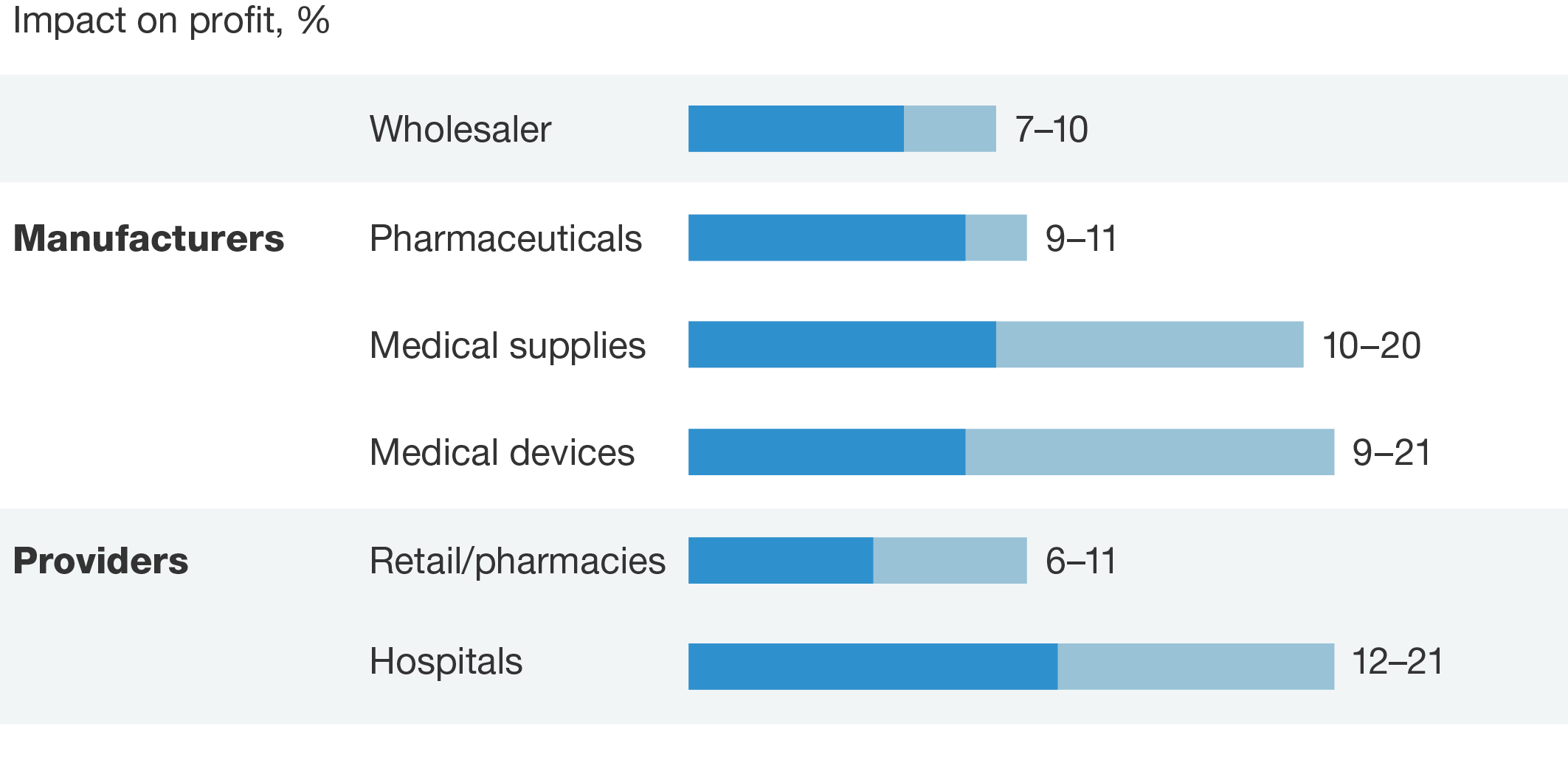
Fig 2: Health care Statistics
The global pharmacy market reached nearly $3.2 billion in 2014. This market is expected to grow to nearly $3.8 billion in 2017 and $4.9 billion in 2020 with a compound annual growth rate (CAGR) of 8.8% over the five-year period, 2014 to 2020. Clinical pharmacy has a rich history of advancing practice through innovation. These innovations helped to mold clinical pharmacy into a patient-centered discipline recognized for its contributions to improving medication therapy outcomes. The next few years will see spending on drugs in established markets in North America, Europe and Japan grow by just 1-4% annually.
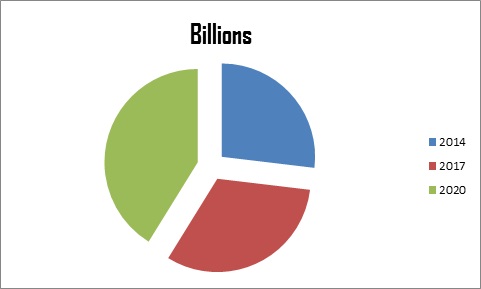
Fig 3: Market grow in field of Pharma
R&D Spending in the Pharmaceutical Industry
The pharmaceutical industry's lifeblood is R&D. The success of major drug companies is almost wholly dependent upon the discovery and development of new medicines and their allocation of capital expenditures reflect that fact. On average, pharmaceutical companies dedicate approximately 18% of their budget to R&D, and some companies within the industry spend substantially more than that.
As of 2013, many of the largest pharmaceutical firms spend nearly 20% on R&D. Of the 20 largest R&D spending industrial companies in the world, pharmaceutical companies make up nearly half the list. Eli Lilly is currently spending roughly 23% on R&D. Biogen is right behind, at approximately 22%. Both Roche and Merck are spending just under 20%. Pfizer and AstraZeneca are closer to the 15% level, along with GlaxoSmithKline. Abbott Laboratories is on the lower end of the spectrum, dedicating about 12% of revenues to R&D spending. Many smaller pharma companies have lower revenue totals to work with, so they spend significantly higher percentages of their budget on R&D – up to 50% for some firms.
The high level of R&D expenditures in the pharmaceutical industry is easy to understand given the cost of developing a new drug and bringing it to market. The average R&D to marketplace cost for a new medicine is nearly $4 billion, and can sometimes exceed $10 billion.
Source: http://www.investopedia.com
http://www.transparencymarketresearch.com
- Hospital and Clinical pharmacy
- Community Pharmacy
- Clinical pharmacology and toxicology
- Hospital Pharmacy & Pharmacy practice
- Clinical research & development
- Drug Monitoring & Drug dosing
- Role of Pharmacists & Research in the Hospital
- Pharmacovigilence and patient safety
- Industrial pharmacy
- Pharmacy education
- Hospital and clinical informatics
- Tele Health via Pharmacy
- Oncology pharmacy
- Pharmacoeconomics
- Pharmacogenomics and therapeutics
- Consultant pharmacists
- Disease management
- Good clinical practices
- Travel Medicine
- Entrepreneurs investment meeting
- Journal of Hospital & Medical Management
- American Journal of Pharmacology and Pharmacotherapeutics
- Archives of Medicine
- Journal of Drug Abuse












